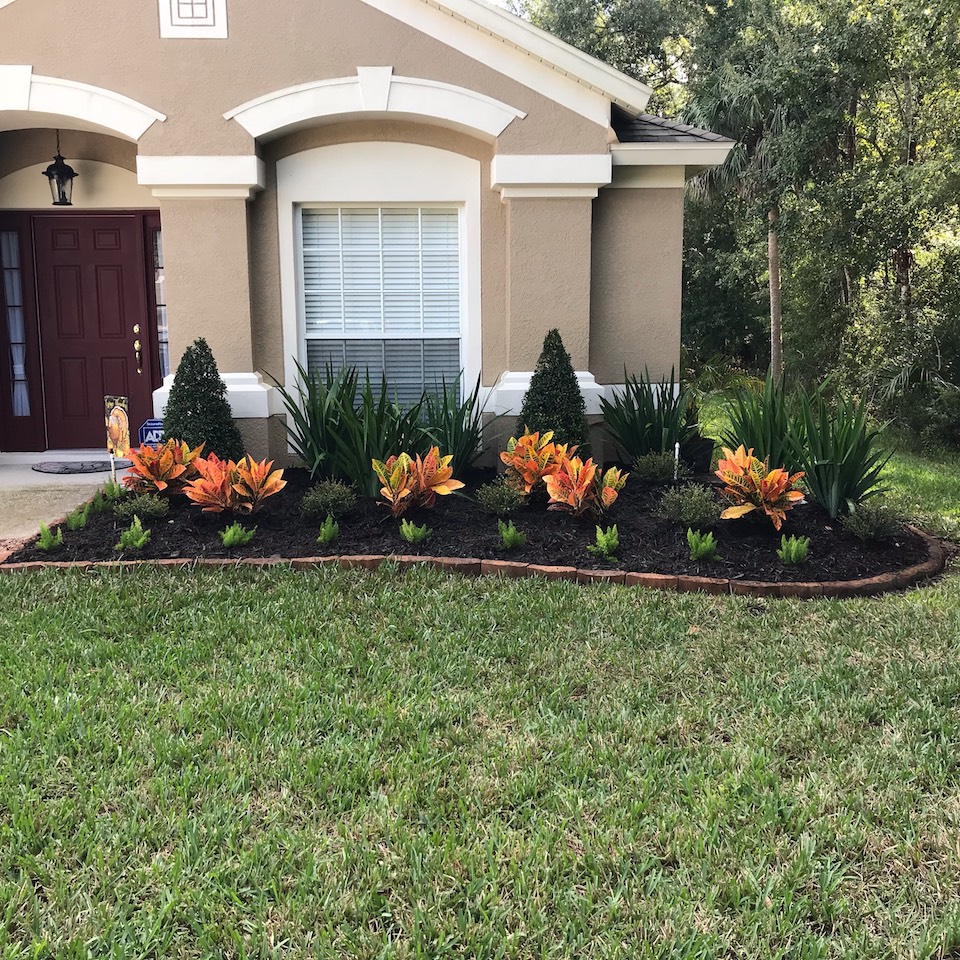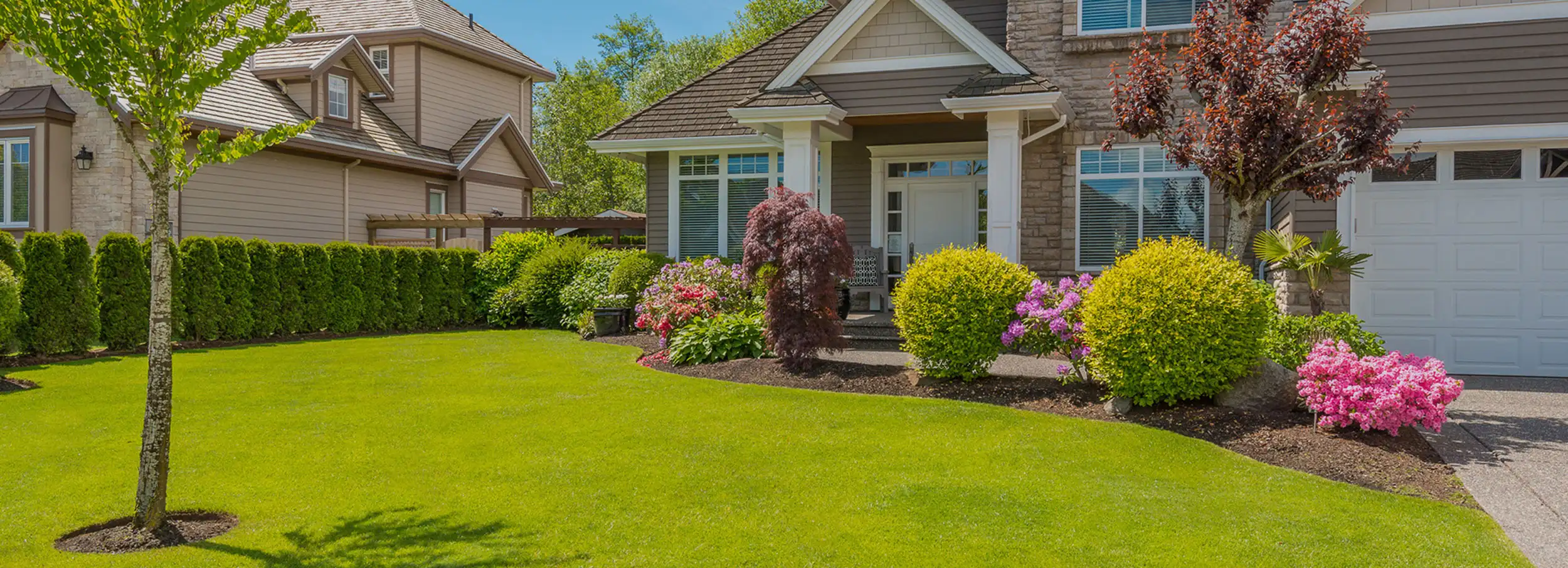A Comprehensive Overview to Designing and Implementing Effective Landscaping Solutions
The art and scientific research of landscape design extend past simple looks; they include a thoughtful integration of layout principles, environmental stewardship, and sensible application. A comprehensive overview to efficient landscape design options begins with a comprehensive understanding of your outside space, stressing the significance of proportion, equilibrium, and unity. As we explore lasting techniques and the choice of appropriate vegetation, the implications for biodiversity and area wellness become significantly apparent. What strategies can one utilize to ensure these landscapes not just flourish however also prosper in consistency with their surroundings?

Understanding Landscape Layout Principles
One could wonder what foundational components contribute to reliable landscape style. At its core, effective landscape style depends upon a number of key concepts that direct the setup and choice of components within an area. These concepts include unity, percentage, balance, and rhythm, each serving to develop a harmonious exterior environment.
Unity describes the cohesive partnership among numerous components, making certain that they function with each other aesthetically and functionally. Equilibrium can be achieved with balanced or asymmetrical setups, enabling the landscape to really feel stable and welcoming. Percentage involves comprehending the range of components in regard to each various other and the surrounding setting, promoting visual consistency and comfort.

Analyzing Your Outdoor Space
Before carrying out the concepts of landscape layout, a comprehensive evaluation of your exterior room is vital. This initial assessment assists specify the range of your landscape design task and makes certain that your layout aligns with the unique qualities of your residential property. Begin by assessing the measurements of your room, taking specific dimensions to recognize the readily available location for numerous components such as patios, pathways, and yards.
Following, observe the existing attributes of your landscape, consisting of topography, dirt high quality, and drain patterns. These elements considerably influence plant option and positioning. Furthermore, examine the sunlight exposure across different areas throughout the day, as this will certainly influence the kinds of plants that grow in your yard.
Take into consideration the microclimates created by frameworks, trees, and various other barriers, as they can impact temperature and moisture degrees. Last but not least, take note of any existing plants or hardscape aspects that you wish to get rid of or maintain. This extensive evaluation lays the foundation for a knowledgeable and efficient landscape design service, ensuring that your layout is not just aesthetically pleasing yet lasting and likewise functional for several years to come.
Lasting Landscaping Techniques
Integrating sustainable landscaping strategies is vital for developing an ecologically responsible outside space. These techniques not only promote eco-friendly balance however additionally boost the functional and aesthetic linked here worth of a landscape. One foundational method is the utilization of indigenous plants, which require less water and upkeep while supporting neighborhood wild animals. Carrying out efficient irrigation systems, such as drip watering, decreases water waste and guarantees that plants obtain adequate wetness.

Another effective method is the critical placement of trees and bushes to give natural windbreaks and shade, therefore decreasing power prices (Palm Desert Landscaping). Rain gardens can be integrated into the landscape style to take care of stormwater runoff efficiently, filtering contaminants prior to they get in rivers
Picking the Right Plant Kingdoms
Selecting the right plants for your landscape check my source is essential to accomplishing both aesthetic charm and eco-friendly harmony. The process starts with an understanding of your local climate, soil conditions, and the specific microenvironments within your landscape. Evaluating elements such as sunlight exposure, dampness levels, and existing flora will aid you select plants that thrive in your distinct setting.
Consider incorporating native plants, as they are well-adapted to local problems, call for less upkeep, and support regional wild animals. Additionally, choosing a diverse range of species can improve biodiversity while minimizing the danger of illness and insect outbreaks. It is important to assess the growth routines, flowering periods, and seasonal colors of possible plants to develop a vibrant and natural landscape.
Additionally, think concerning the meant use the space; as an example, if the area will experience high foot website traffic, go with resilient ground covers. By attentively selecting plants that align with both your environmental requirements and aesthetic goals, you can create a sustainable landscape that not only enhances your residential property however additionally adds positively to the bordering ecosystem.

Application and Maintenance Strategies
When the best plants have actually been chosen for your landscape, the focus moves to reliable execution and ongoing maintenance techniques. Successful setup starts with correct website prep work, which consists of dirt testing to determine nutrient levels and pH, complied with by changing the soil as needed. Meticulously prepare plants according to their development habits and light requirements, ensuring sufficient spacing to promote healthy growth.
Irrigation is an important aspect of execution. Develop a watering routine that thinks about the certain requirements of each plant types, changing for seasonal modifications. Using drip irrigation systems can enhance water efficiency and reduce drainage.
Upkeep methods have to be carried out to make sure the durability and vitality of your landscape. Regular jobs consist of weeding, mulching, and pruning to control development and protect against disease. Fertilization must be performed based on soil tests, providing the necessary nutrients without over-fertilizing.
Monitoring for illness and insects is essential; early discovery can avoid substantial damages. Lastly, seasonal adjustments to maintenance routines, such as winterizing perennials and preparing for springtime development, will make certain that your landscape stays aesthetically attractive and healthy and balanced year-round.
Conclusion
Successful implementation and ongoing maintenance additionally make sure the long life and vigor of landscapes. By incorporating these elements, landscapes can be transformed into gorgeous, practical atmospheres that promote biodiversity and contribute positively to neighborhood wellness.
One may wonder what fundamental aspects add to efficient landscape layout. At its core, effective landscape style pivots on a number of vital concepts that assist the setup and option of components within find out here an area.Choosing the right plants for your landscape is vital to attaining both aesthetic charm and environmental harmony. It is important to evaluate the growth behaviors, growing durations, and seasonal colors of potential plants to create a natural and dynamic landscape.
When the best plants have been picked for your landscape, the emphasis moves to effective implementation and recurring upkeep methods.